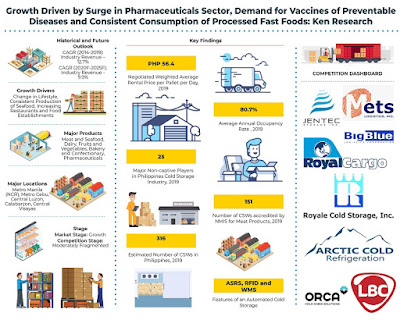“Countries around the world are facing an ageing crisis as
the youngest baby boomers prepare to enter the geriatric cohort. The need for
home healthcare has never been more pressing. It is estimated that the
percentage of elderly population (aged 65 years and older) would be 10.2% of
the total global population by 2022.”
Cost Effectiveness: Across
the globe, hospitalization costs are surging and quality of nursing homes and
residential care facilities is reported to be deteriorating. This has paved the
way for quality in-home care. In
countries, where it is adopted by the government, home-based healthcare proved
to reduce emergency department visits, hospitalizations, and re-admissions. For
instance, in US, Medicare saved USD 2,700 per beneficiary annually for
homebound patients.
Rising
Demand for Elderly Care: The global elderly
population has increased by 10.0% in the last 5 years. Countries such as Japan
and Germany face an “ageing crisis” with high demand for long term care but
much lower supply of medical professionals to cater the demand, especially in the
home healthcare segment, where the employee turnover ratios are higher than
most professions.
Success of Franchise Model: International
companies such as Right at Home and Home Instead Senior Care follow a franchise
business model and many of their franchises have received quality ratings from
home healthcare regulatory bodies. Both these companies have recently entered
China after the nation announced an invitation to foreign companies into its
healthcare sector and laid emphasis on development of home-based care.
Increasing Burden on
Hospital and Nursing Home Beds: The occupancy
rates of beds in nursing homes and hospitals has been increasing in various
countries hence stakeholders are more willing to adopt ways to shift patients
to their homes and free up beds for more complex and urgent cases. According to
a survey by Canadian Home Care Association, with the aid of healthcare services at home, there has been a decline of around 72.0% in emergency department
visits.
The report
titled “Global Home Healthcare Market Outlook to 2025– By
Patient Profile (Elderly Care, Rehabilitation, Physiotherapy, Wound Care and
Others), By Age Group in Years (Mother and Infant, Below 25, 25-40, 40-65 and
65 & Above) and By Region (USA, Germany, UK, Canada, Japan, Australia,
China, India, South Africa, UAE and Others)”gives an in
depth, comprehensive study on the global home healthcare market. The report
covers various aspects including overview & genesis of the market, global
home healthcare trends and challenges, market size by revenue along with
segmentations for four regions (America, Europe, Asia-Pacific and Middle East
and Africa. Country snapshots for 10 countries (USA, Canada, Germany, UK,
Australia, Japan, China, India, South Africa and UAE) are also included. It is
further expected that the market would grow by CAGR 5.4% between 2019 and 2025.
Key Segments Covered:-
Global
Home Healthcare Market
By
Region
America
Europe
Asia Pacific
Middle East and
Africa
By
Countries
USA
Canada
Germany
UK
Australia
Japan
India
South Africa
UAE
Snapshot on
China Home Healthcare Market
By
Age Group
Mother and
Infant
Below 25
25-40
40-65
65 Above
By
Patient Profile
Elderly Care
Rehabilitation
Physiotherapy
Wound Care
Others (COPD,
Lab Tests, Injections, Dementia Care etc.)
By
Service Stream
Staff &
Support Service (Nurses, Doctors, Assistants and Support Software)
Rental Service
(Equipment/Lab/Pharma)
Key
Target Audience:-
Home Healthcare
Agencies
Healthcare
Device Manufacturing Companies
Healthcare
Software Companies
Home Care
Companies
Nursing/Elderly
Care Companies
Government
Health Departments/Ministry of Health
Nursing
Associations
Home Care
Associations
Elderly Care
Associations/Companies
Healthcare
Consulting Companies
Home Healthcare
NGOs and Non-Profit Organizations
Time
Period Captured in the Report
Historical
Period: 2014-2019
Forecast
Period: 2020F-2025F
Companies
Covered:-
Healthcare at
Home
Kindred
Healthcare
Home Instead
Senior Care
LHC Group
Bayada
Amedisys
Almost Family
Encompass Health
Corporation
Addus Homecare
Right at Home
Portea Medical
(Healthvista India Pvt. Ltd.)
For
More Information, refer to below link:-
Related
Reports:-
India Home Healthcare Market Outlook to 2023 - By
Patient Profile (Elderly Care, Physiotherapy, Stroke rehabilitation, Wound Care
and Others); By Organized (Subscription and Non Recurring Model) and
Unorganized, By Major Cities
Contact Us:-
Ken Research
Ankur Gupta, Head
Marketing & Communications
+91-9015378249




